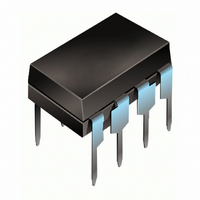PVA1352 International Rectifier, PVA1352 Datasheet

PVA1352
Specifications of PVA1352
Available stocks
Related parts for PVA1352
PVA1352 Summary of contents
Page 1
... Designers can now develop switching systems to new standards of electrical perfor- mance and mechanical compactness. Replaced by PVA13N Single-Pole, 300mA, 0-100V AC/DC Part Identification Part Number Operating Voltage (AC/DC) PVA1352 0 – 100V PVA1354 PD 10020-E Microelectronic Power IC Relay PVA13 Features BOSFET Power IC 10 ...
Page 2
... Minimum Off-state Resistance 25° VDC (see figure 5) Maximum Thermal Offset Voltage @ 5.0mA Control Minimum Off-State dv/dt Output Capacitance (see figure 9) GENERAL CHARACTERISTICS (PVA1352 and PVA1354) Dielectric Strength: Input-Output Insulation Resistance: Input-Output @ 90V Maximum Capacitance: Input-Output Max. Pin Soldering Temperature (1.6mm below seating plane, 10 seconds max.) ...
Page 3
Replaced by PVA13N Ambient Temperature (°C) Figure 1. Current Derating Curves V DD (volts) Figure 3.Typical On Characteristics I LED (mA) Figure 2. Typical Control Current Requirements Ambient Temperature (°C) Figure 4. Typical On-Resistance ...
Page 4
Replaced by PVA13N Ambient Temperature (°C) Figure 5. Normalized Off-State Leakage Delay Time (microseconds) Figure 7.Typical Delay Times LED Forward Voltage Drop (Volts DC) Figure 6. Input Characteristics (Current Controlled) Figure 8. Delay Time Definitions ...
Page 5
Wiring Diagram Replaced by PVA13N V DD Drain to Drain Voltage Figure 9. Typical Output Capacitance ...
Page 6
Replaced by PVA13N 12/6/2000 ...







